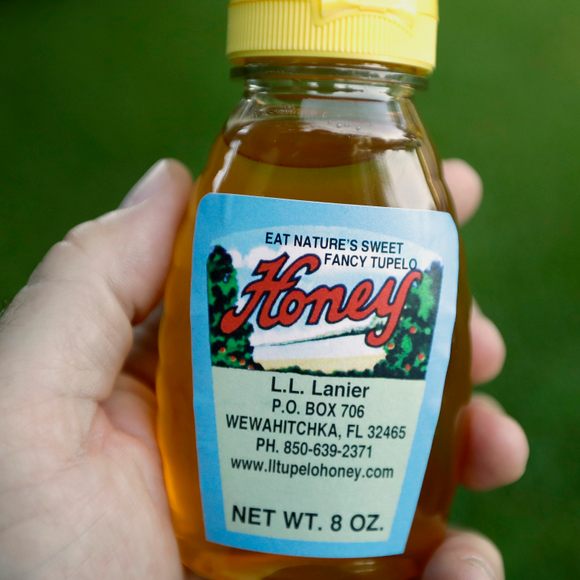Ingredients & Condiments
Tupelo Honey
Beekeepers in the United States' southeastern swamplands are fighting to preserve this smooth, sweet delicacy.
The dulcet assertions of Van Morrison’s song of the same name may have clarified that tupelo honey is indeed as sweet and angelic as any lover can aspire to be, but its fame endures for the honey’s velvety smoothness and delicate taste, unmatched by any other of its kind.
The Ogeechee tupelo gum tree proliferates in the wetlands of the Florida Panhandle, particularly along the Chipola and Apalachicola River, and in the swamps surrounding the Altamaha River basin in southern Georgia. Its berry-bearing flowers—tiny and greenish with pale wisps for petals— bloom over just two or three weeks every year, when beekeepers scramble to get bees to the nectar. They place hives in secret, isolated spots along the rivers, in areas that, in many cases, can be reached only by boat. Some beekeepers set stacked hives to sail on barges in the direction of the white tupelo trees in the swamps.
There are only a handful of beekeepers today who send their bees in search of tupelo trees. Typically in April or May, honey-gathering season is intense, unpredictable, and, due to the brief blooming window, requires quick precision. The bees must have cleaned combs so the tupelo honey does not get mixed in with any other kinds previously in the combs. Because this is swampland, mosquito control units will sometimes spray pesticides into the area, killing the bees. Tupelo trees have also fallen prey to hurricanes or encroaching urban development.
Pure tupelo honey has a distinctive greenish tint. It is extracted and strained, but does not undergo further processing. This isn’t your typical farmer’s market honey either. A 12-ounce bottle currently costs around $18, and at least one company sells a special “gold reserve” bottle, which is packaged to look like fine wine, sealed with wax from the same batch of bees that made the honey, and wrapped in a cask made of Canadian birch. Like a fine wine, it retails at $99 a bottle.
Because tupelo honey is expensive, and adulteration abundant (typically with gallberry honey, from the gallberry tree, which blooms soon after the tupelo), one way to gauge purity is by checking for granulation. The low sucrose levels in pure tupelo ensure that it does not crystallize. It can keep for years, but sellers recommend consumption within the first few. The aroma is floral, and the taste fruity but also buttery. Fans discern notes of pear, rose water, and cotton candy. There are also hints of jasmine and cinnamon in other batches.
Elegant with a soft golden glow, tupelo honey is as great in recipes for dips and dressings as it is on its own, poured over fresh cheese, nuts, or bread pudding.
Where to Try It
-
L. L. Lanier Tupelo Honey Website
318 Lake Grove Road, P.O. Box 706 , Wewahitchka, Florida, 32465, United StatesThe first tupelo honey purveyors in Florida, L. L. Lanier has been in operation since 1898.
-
Savannah Bee Company Website
104 West Broughton Street, Savannah, Georgia, 31401, United StatesThese tupelo honey purveyors are located in Georgia.
Written By
 Rohini Chaki
Rohini Chaki














